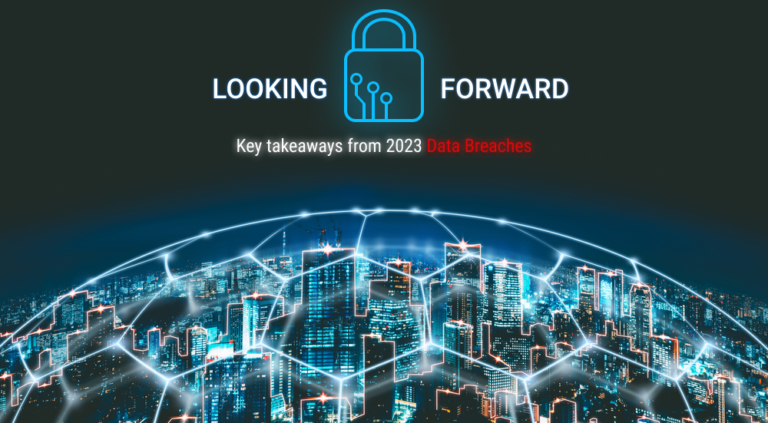
Architectural Drawing – Zero Trust Architecture Part Two
In the first part of our deep dive into the shifting landscape of cybersecurity, we highlighted the growing limitations of traditional trust models in the face of a rapidly evolving digital environment. As cyber threats become more sophisticated, the static nature of these models exposes their inherent flaws. Consequently, there’s a compelling need to replace them with a more dynamic, versatile, and vigilant approach. Enter the concept of Zero Trust Architecture, a model that breaks free from the constraints of outdated trust assumptions and insists on a principle of “never trust, always verify.”
Zero Trust Architecture presents a forward-thinking approach to the modern era’s cyber challenges, but an important observation accompanies this: there are no products in the current market that fully encapsulate this principle. As we venture into the second part of this discussion, we’ll explore the practical implications and challenges of implementing a Zero Trust model. You’ll discover that the transition to this new model requires not just the adoption of an array of cybersecurity tools, but a fundamental shift in perspective – from a network-centric approach to one that considers the human factor.
Consider the cybersecurity (detecting both external and internal threat signals) sector as an architect’s drafting table. On it, you’ll find an array of tools, designed to sketch out blueprints for various types of edifices. These edifices represent different cybersecurity solutions to detect specific threat signals, such as User and Entity Behavior Analytics (UEBA), Data Loss Prevention (DLP), and Security Information and Event Management (SIEM) systems, which are the skyscrapers, townhouses, and office blocks in our analogy. They’re built to address security needs of corporate networks and are highly effective in their dedicated roles.
As an architect plans a neighborhood, they don’t just design individual buildings, they consider the people who will live there. It’s not just about the bricks and mortar of the houses, but about the lives that will unfold within and around them. In much the same way, in the realm of cybersecurity, we must remember that people don’t just exist within the network, they also live outside of it. It’s here, at the human level, where risk can often be found.
Human resources departments understand this principle well. They don’t just grant network access to employees blindly; instead, they assess potential risks even before an employee is hired. For HR, trust is verified at the point of hire and handed off to corporate security thereafter. This gap security creates a blind spot in organization thereafter.
The problem is that people live off of the network. Risk occurs outside of the network at the human level. Just ask HR, they assess the risk of employees entering the network before they are hired. Now, imagine we shift our task from designing with network-centric tools (the buildings) to include risks posed by the users (the residents). Then we see that zero trust is a concept that ultimately needs a complete integration of person centric security and network centric security.
Now, envision a shift, where the design is no longer solely based on the network-centric tools but also includes a thorough understanding of the potential risks presented by the users. Zero Trust Architecture is no longer just an architectural blueprint, but a comprehensive design, one that integrates threat signals from both person-centric and network-centric security.
As a Chief Information Security Officer (CISO), the responsibility of integrating and enhancing the scope of cybersecurity falls upon your shoulders. It becomes crucial to understand that to truly bridge the blind spot in security, the organization’s perspective must be extended beyond the corporate network. It’s crucial to comprehend that to truly address the blind spots in security, the organization’s viewpoint must stretch beyond the confines of the corporate network. But how do you convince stakeholders and establish a compelling case for this transition? Here are some tips:
- Build on Data: Back your case with data. Highlight the trends and patterns in security breaches, emphasizing the rise in threats originating from beyond the network. Use case studies or industry reports that underscore the evolving nature of risks and the increasing need for continuous user-centric security.
- Demonstrate Value: Show the value of a continuous, user-centric approach to security. This might include the potential to detect threats earlier, the capacity to respond to risks more rapidly, and the capability to prevent security breaches more effectively.
- Clarify the Concept: Zero Trust can seem complex and daunting. Make sure you break down the concept and explain how a user-centric approach to security aligns with its principles. Use plain language and relatable examples to articulate the importance of continuous assessment in ensuring trust.
- Discuss the Cost of Inaction: Highlight the potential costs of not shifting towards a more comprehensive security approach. This could include the financial impact of data breaches, the reputational damage of security incidents, and the potential legal consequences of failing to protect sensitive information.
- Provide a Clear Roadmap: Outline a clear path for the transition from a network-centric to a user-centric security model. Highlight how current processes can be augmented with tools that enable continuous evaluation of users, providing a more dynamic and current risk profile.
- Involve Stakeholders: Ensure that key stakeholders are involved in the process from the beginning. Their buy-in will be critical for the successful transition to a more comprehensive, Zero Trust-based security approach.
By leading this shift and making a compelling case for change, you can guide your organization towards a more robust, resilient, and future-ready security posture. The complexities of today’s digital world necessitate a cybersecurity framework that is as dynamic as the threats it faces. Zero Trust Architecture, with its insistence on constant verification, provides such a framework. However, to be truly effective, it needs to encapsulate both the network and the users, mirroring the holistic approach an architect takes when planning a community.
The task falls to the CISO to spearhead this shift, extending their organization’s security measures beyond the network and into continuous evaluation of user-related risks. The road may be challenging, but the value – a more robust, resilient, and future-ready security posture – is well worth it. This broader perspective on security doesn’t undermine the importance of network-centric tools, but rather, it emphasizes the need to harmonize them with person-centric strategies, leading to a more comprehensive security approach aligned with the principles of Zero Trust Architecture.













